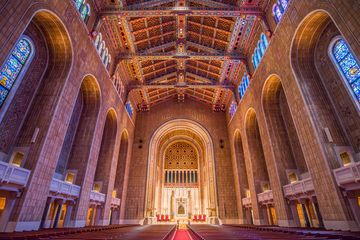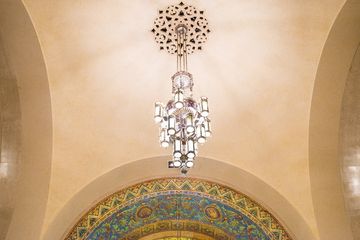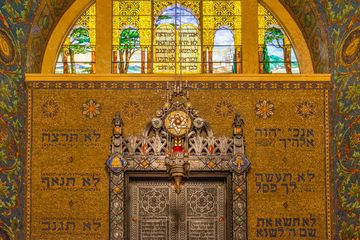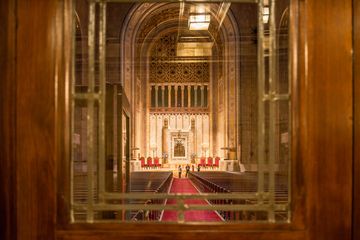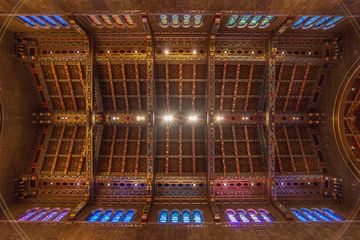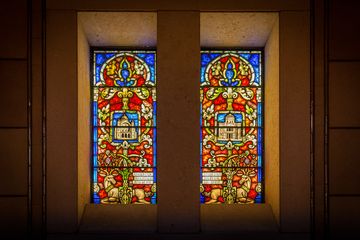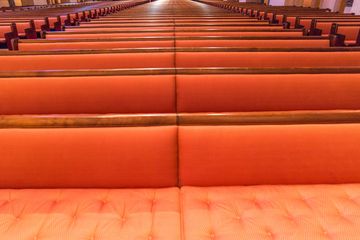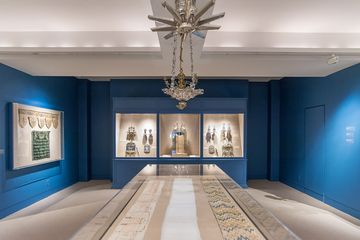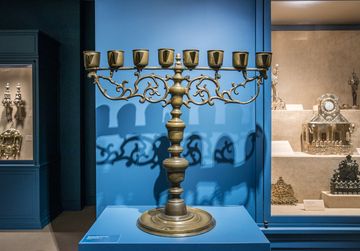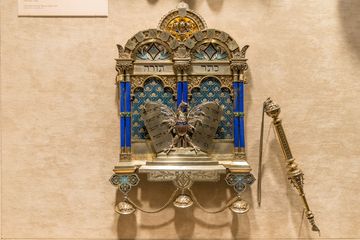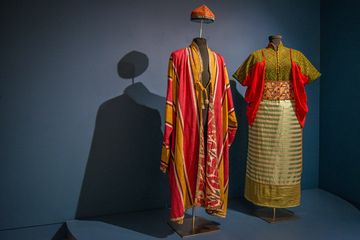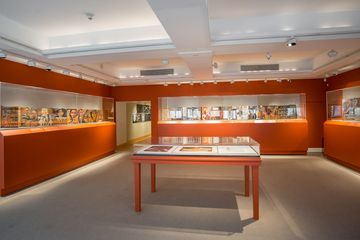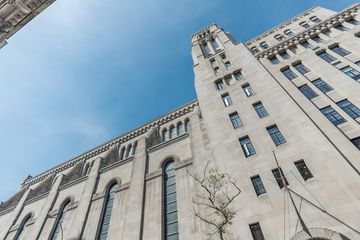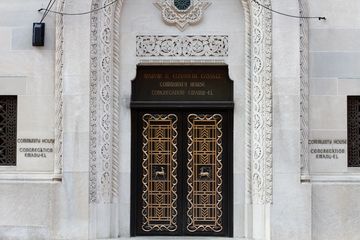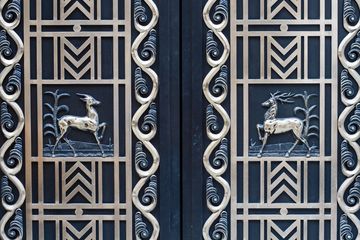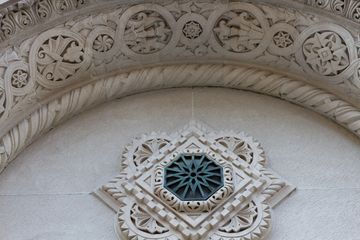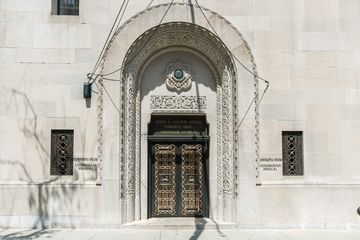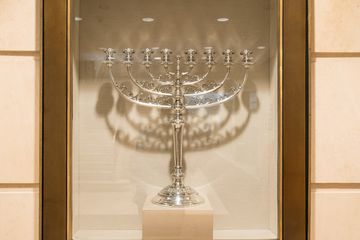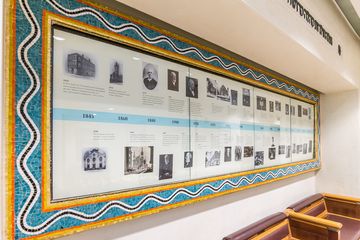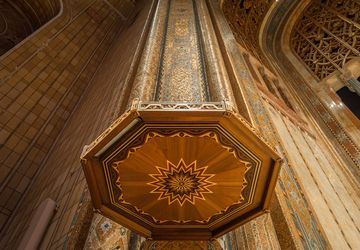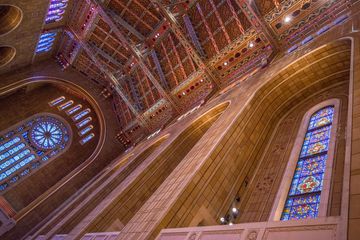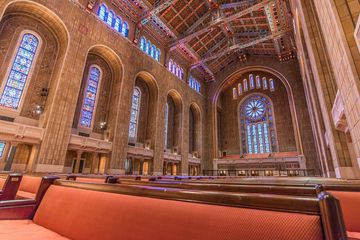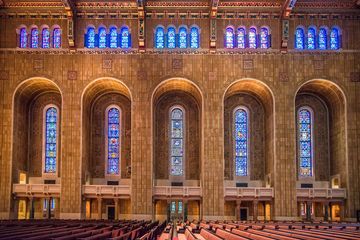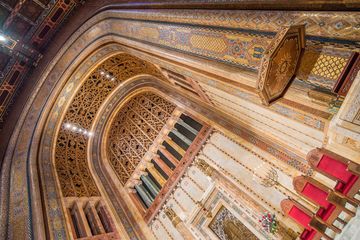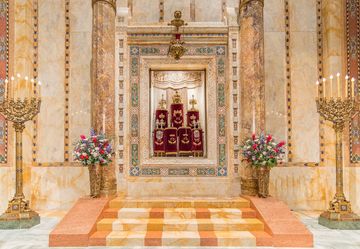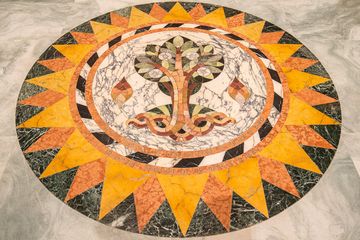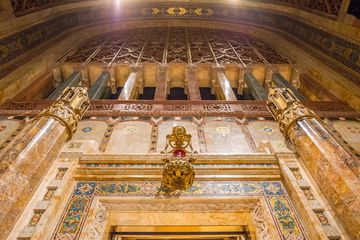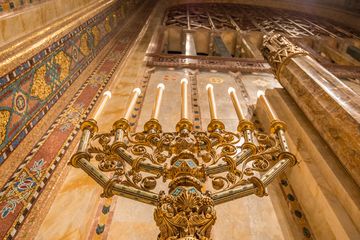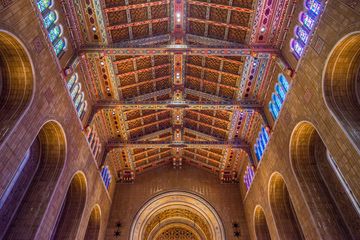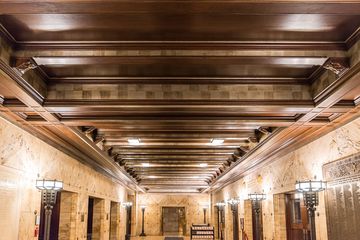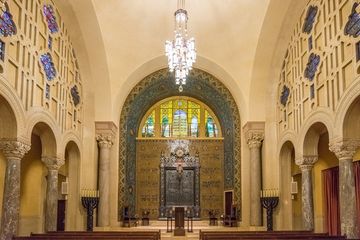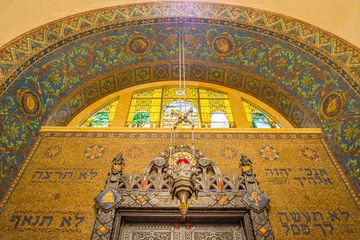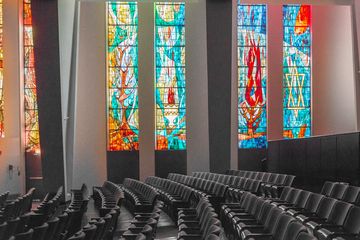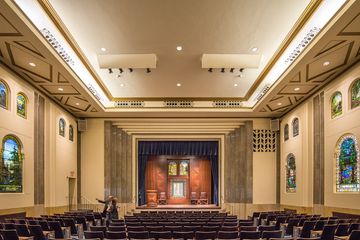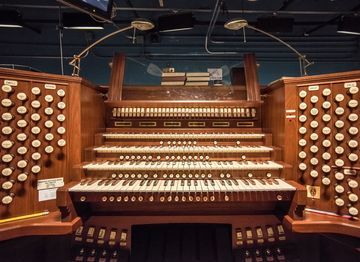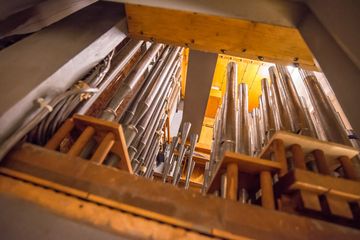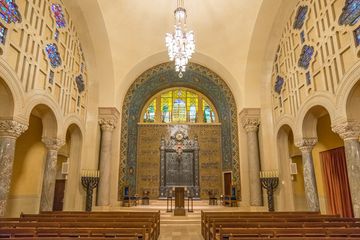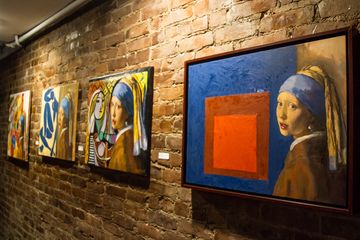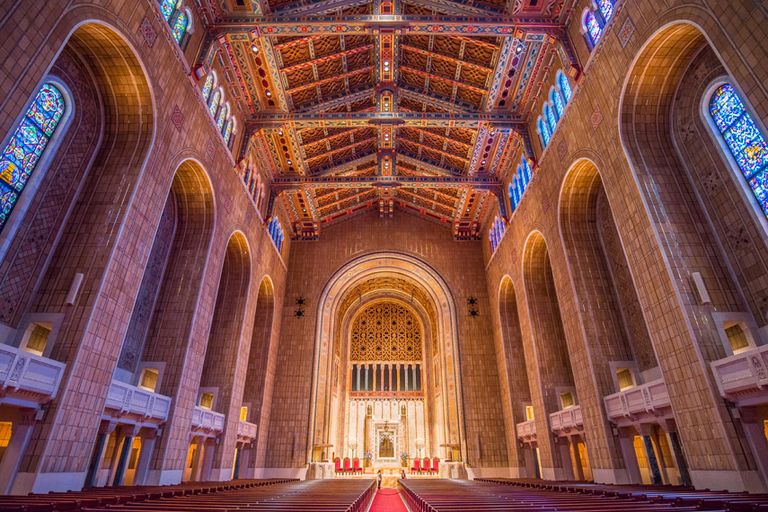
After walking down the 65th Street sidewalk, and going through the imposing bronze doors, I found myself in a place of worship, a place of connection, and a place of significant history. Moreover, it is a synagogue that stands as evidence of religious and cultural movements, technological and artistic development, and the evolution from being a Jew living in America to being an American Jew.
I have passed by this grand building for decades and always imagined stepping inside. Being invited in by Cara Glickman, Vice President of Finance and Administration, was a welcome moment, but little did I expect to spend the next two hours receiving a comprehensive tour and education on this world renowned building. With only thirty-three German Jewish immigrants, Temple Emanu-El humbly began on Grand and Clinton Streets in 1845. In 1854, the temple relocated to 12th Street, and in 1868, garnering more congregants and support, it moved uptown to 43rd Street until 1925. In 1929, Temple Emanu-El consolidated with Temple Beth-El, another reform institution of Germanic Jewish ancestry founded in 1874, and opened as a new complex on 65th Street, complete with the Beth-El Chapel which features a Byzantine double-dome roof. In 1963, Temple Emanu-El expanded its religious school and opened an adjoining facility up on 66th Street.
The move to 65th Street was as much a political statement as an acquisition for a larger religious practice, we learned from Mark Heutlinger, who joined us on our tour of the building. A twenty-five year veteran of Emanu-El, serving as the Administrator, Mark demonstrated his wealth of knowledge and an unprecedented passion for this institution. As we were walking, he explained to us that the move uptown said “we, as Jews, are here, and we are not going anywhere.” It was an acculturation into society, preserving of faith and heritage, “the Temple’s construction was the embodiment of the ideal of Emanu-El to fit within the mosaic of New York life.” The main sanctuary was designed as a basilica structure, setting a tone of grandeur with its high ceilings, delicate stained glass windows, and exquisite arc. As a response to a long history of second-class status, the Jewish culture would now be “second to none, equal to all.” With initial reactions ranging from “how dare they” to “wow,” the temple was redefining life for Jewish Americans, offering permanence and pride.
Aesthetically, the temple is an “eclectic mix of different architecture.” On the 66th Street wing, the Lowenstein Sanctuary built in 1962 is of modern style. The lobby on Fifth Avenue, known as the Marvin and Elisabeth Cassel Foyer, is a “singular expression of art deco style,” complete with beautifully designed radiator covers and sculpted door handles. Mark continued to explain that the synagogue was uniquely designed such that the cantor and rabbi would stand at separate podiums so as not to obstruct the vision of the arc (restored during the temple’s restoration from 2003 to 2006). Mark opened the ark for us, revealing seven torahs split into two rows, for “a semblance of congruency.” Above the ark, one can see a slip curtain opening to the choir room complete with a grand electronic wind pipe organ.
Placed in chronological order, some of the most breathtaking parts of this main sanctuary are the stained glass windows. The stained glass sends a message of ancestral and religious history. As we walked to the back of the sanctuary, we stared at the visual representations of biblical stories like Noah’s Arc and meaningful symbols representing the Twelve Tribes of Israel. The Tribe of Reuben was identified by an eagle, which is also representative of the United States, an amalgamation of the “American Jewish Experience.”
Within Temple Emanu-El resides The Herbert and Eileen Bernard Museum of Judaica, featuring both treasured and permanent objects acquired over the years by the temple. The oldest item in the room is a thirteenth century Hanukkah menorah. Other items included collapsible menorahs and even a dollhouse menorah designed to hide their religious identity in response to continuous European anti-Semitism forbidding Jewish expression. One of the Museum objects is a torah breastplate emblazoned with an Eagle and an American flag, sending the message that the Jewish Americans, as early as the 1890s continued to communicate, “We are American.”
In conclusion, Mark announced proudly that Congregation Emanu-El is the largest temple in the United States, and together with the nineteenth century Dahany Temple of Budapest, it is considered to be the grandest possibly in the world. So integral to the Jewish American identity, it is one structure that certainly shapes the cultures and neighborhoods on the side streets of Manhattan.
